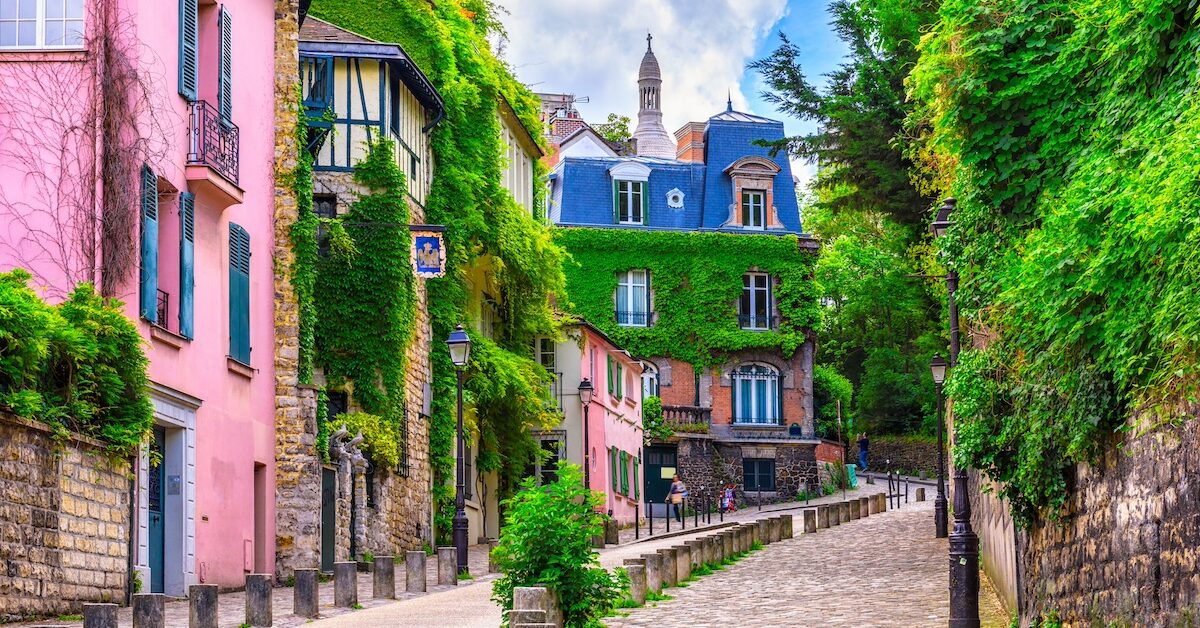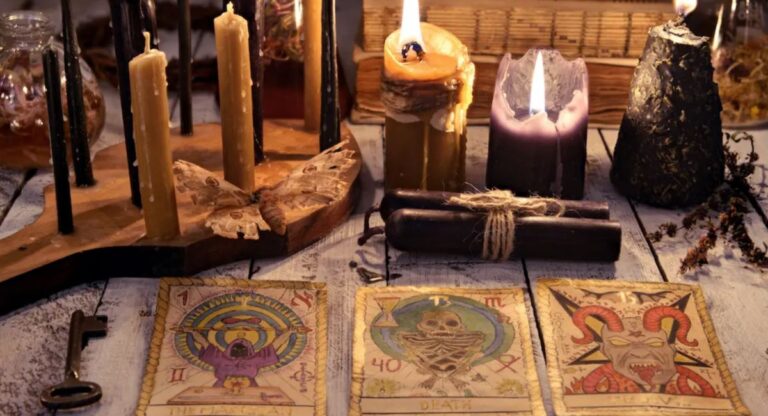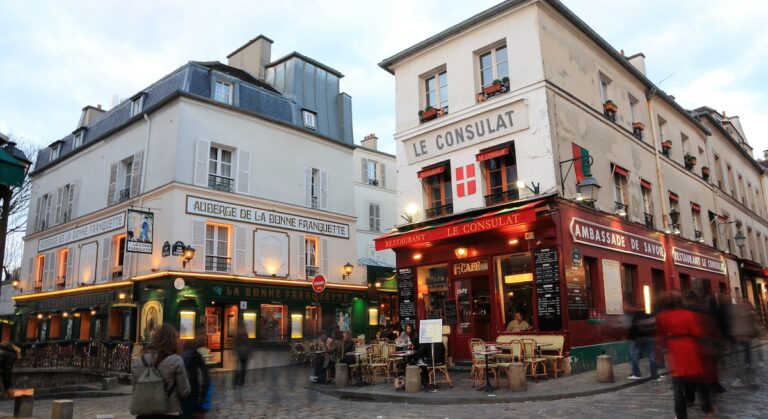La Butte Montmartre (Montmartre Hill), commonly known as Montmartre, is one of the most universally recognized and popular sites in Paris. It often feels like a separate village on a hill, which it was until 1860, when the hills surrounding Paris were folded into the 18th arrondissement. The area is most famous for Montmartre attractions like the Sacré-Coeur Basilica, the world famous cabaret Moulin Rouge, the picturesque La Maison Rose, the romantic Le Mur des je t’aime, and the historic Montmartre Museum. But these cobbled streets have also been well-traveled by writers and artists such as Jean Cocteau, Gertrude Stein, Guillaume Apollinaire, and Pablo Picasso, to name a few. Visiting Montmartre can offer a spectacular journey into the past. (Because of its twists, hills, and stairs, we recommend walking rather than biking.) Here are Frenchly’s suggestions of the top things to do in Montmartre.
1. Visit the Basilica of Sacré-Coeur

For the price of one metro ticket (or included in your weekly Navigo metro pass) ride the Funiculaire de Montmartre (Montmartre funicular) cable car up from the base of La Butte Montmartre to reach the peak of Paris and visit the world-famous Basilica of Sacré-Coeur (Sacred Heart). Built on the second highest point in Paris, it can be seen from throughout the city, including from many of the rooftop restaurants of Paris, but nothing matches the sense of majesty that comes with seeing it up close. You’ll find one of the best panoramic views of Paris (besides the Eiffel Tower) from the observation deck at the base of Sacré-Coeur Basilica. The fence here is completely covered with love locks, which people have been hanging to commemorate their love since the city outlawed putting them on the Pont des Arts. If you’re looking for things to do in Montmartre with children, be sure to stop at the Carrousel de Saint Pierre down by the base of the Funicular.
2. See Saint-Pierre de Montmartre, the church where the Jesuits began
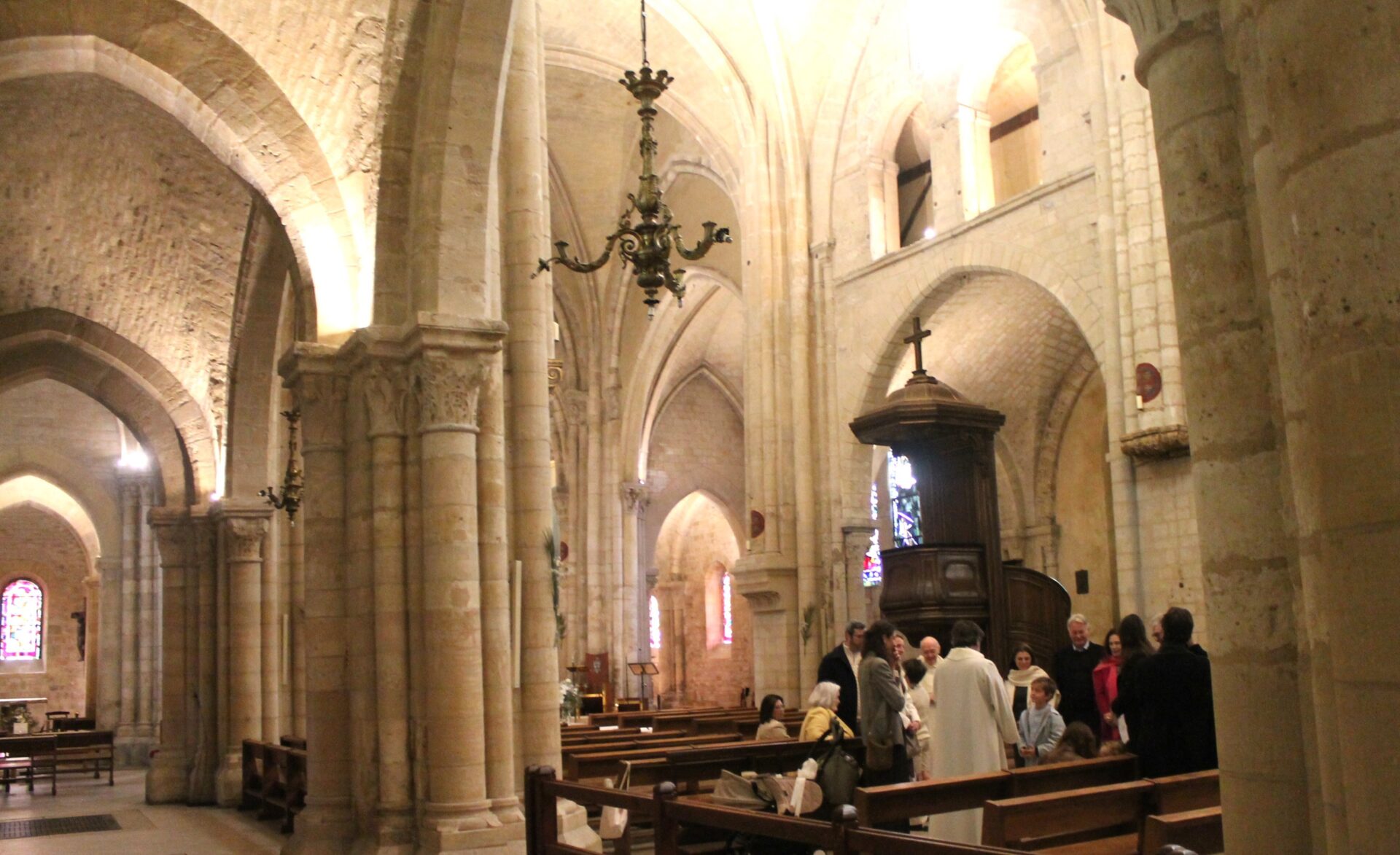
Step off the perennially bustling Rue du Mont Cenis and into the quiet sanctum of Saint-Pierre de Montmartre. Built on the site of a Roman temple, this 12th century church is where Saint Ignatius Loyola founded the order of the Jesuits. Much of the church was destroyed during the French Revolution and rebuilt in 1899, creating an interesting mix of medieval and modern architecture. Some of the most ancient remaining details include several stunning marble columns from the 3rd century, and a 16th century baptismal font which is still very much in use.
3. People watch from the terrace of an outdoor café
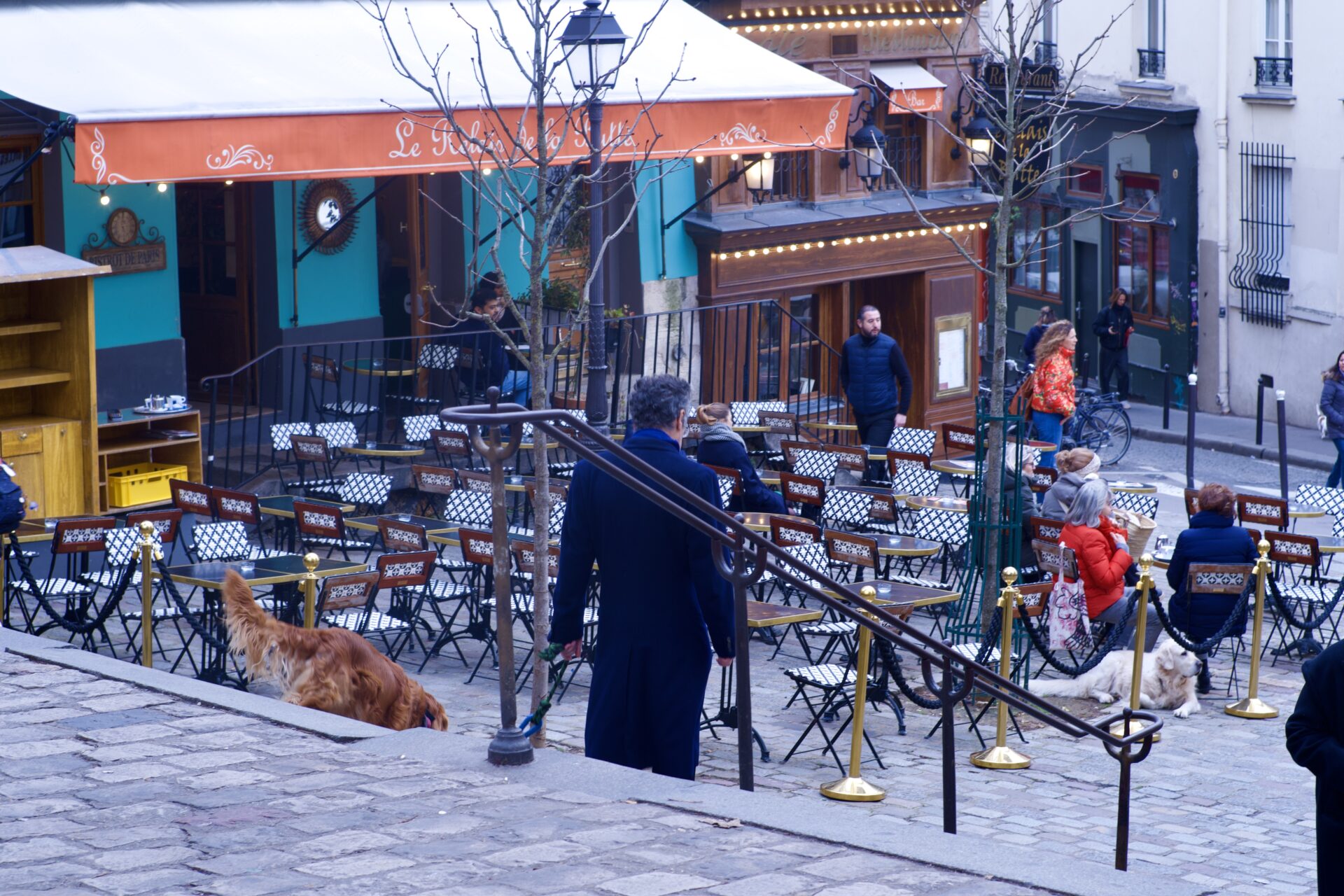
Photo: Octave Lehmann
This very Parisian pastime is a must in Montmartre. Watching the neighborhood residents enjoying their morning routines of reading the paper over a cup of coffee with their dogs sitting obediently at their feet reminds you that this isn’t a movie set or a dream, this is Paris! Two local favorites I recommend are the Café du Théâtre on the Place Charles Dullin, and Le Relais de la Butte on rue Ravignon. (I tend to avoid the Place du Tertre, which, though quite famous, is surrounded by mostly mediocre restaurants and is potentially a pickpocket hotspot.)
4. Visit Le Bateau-Lavoir, the artist hang-out where Picasso lived and painted
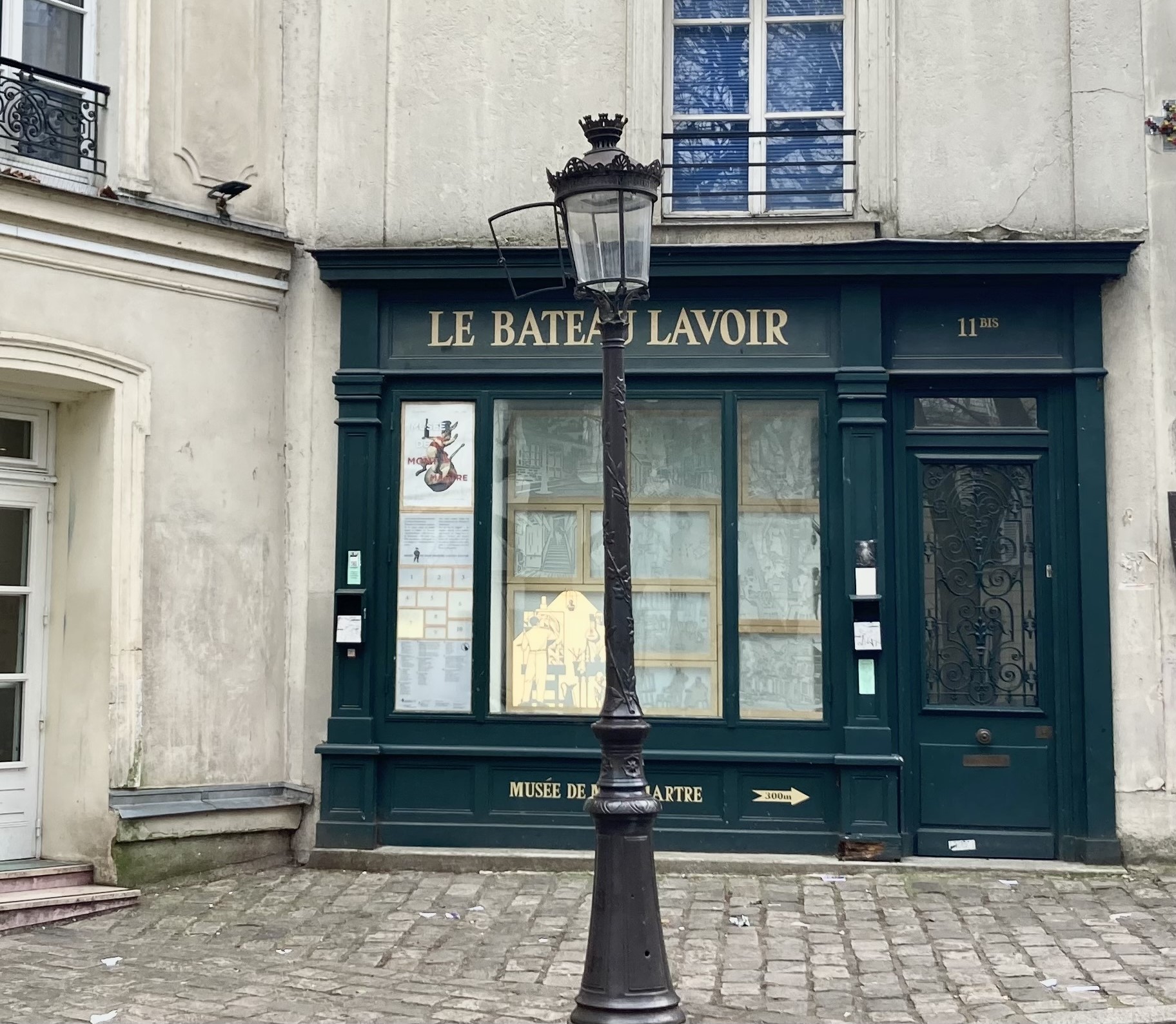
Pay tribute to some of the greatest artists and writers of the early 20th century by visiting Le Bateau-Lavoir, the former piano factory-turned ramshackle rooming house (and workshops) where the likes of Picasso, Jean Cocteau, and Modigliani lived and worked when they were down and out artists in Paris. To visit inside you’ll need to take a guided tour with an outfit like Explore Paris, which offers tours from the impassioned and knowledgeable Bertrand Christmann.
5. Take in a show at the 19th century cabaret, Au Lapin Agile

While spending a night at the famous Moulin Rouge may be one of the more well known things to do in Montmartre, it’s not the only cabaret in town. The Lapin Agile, which dates back to 1860, was best known as a favorite hangout of artists and rowdie locals in the early 20th century. Today, the cabaret features continual performances from 9pm until 1am on Tuesdays, Thursdays, Fridays, and Saturdays, during which you will be regaled with classic drinking songs and French cabaret music from singers like Édith Piaf. (Singing along is encouraged.) The 35€ ticket includes one drink. (Note: There’s no food served so it’s best to go after dinner in the area. Keep reading for some of my Montmartre restaurant recommendations.)
6. Climb up (and down) the famous stairs of Montmartre
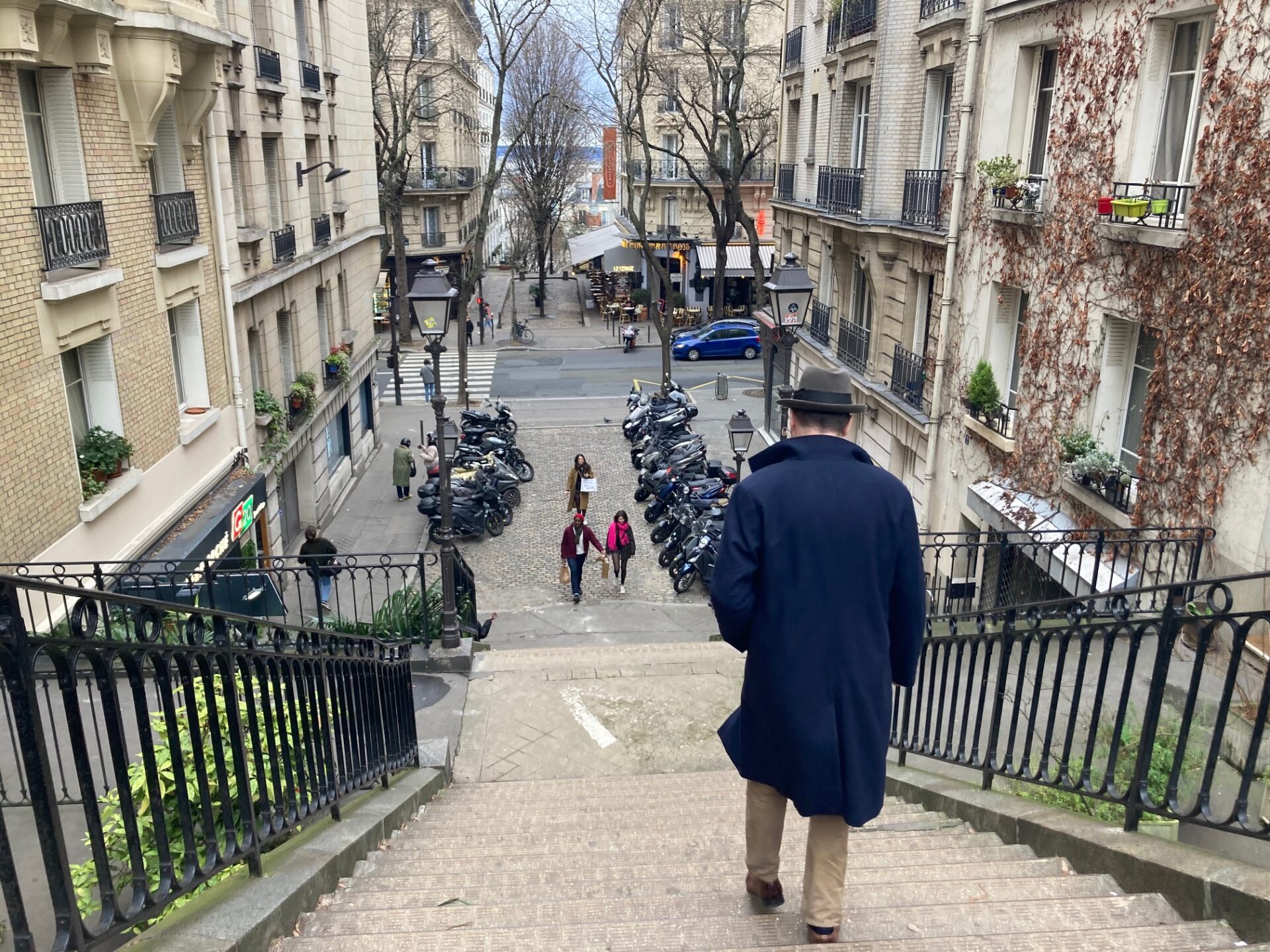
Photo: Octave Lehmann
You won’t be looking for a walking tour by the time you finish exploring the hilly Montmartre neighborhood–exploring Montmartre is not for the faint of heart. Plan to log a whole lot of steps on some of the thirty-eight stairs, many lined with trees and old-fashioned street lamps, that crisscross the 18th arrondissement. The one that runs alongside the Montmartre Funicular has an actual street name, rue Foyatier. There are quite a number of stairs running the length of rue du Mont Cenis, one of the truly ancient streets of Paris that leads up to Montmartre. The regal bifurcated staircase at Square Caulaincourt is a stand-out for charm, and the double parallel stairs on either side of the Lamarck-Caulaincourt metro station are truly one-of-a-kind.
7. Discover hidden art

Discover hidden art in this village-on-the-hill that was the cradle of the Paris art scene for so long. The walls of a number of the iconic Montmartre stairs serve as a canvas for Paris’ street artists. In the lobby of an unassuming building (43 bis rue Damrémont) you’ll come upon one of the most spectacular and best kept secret finds – stunning ceramic tile murals depicting flowers, animals, and children playing in the streets of Montmartre. To keep exploring off the beaten path in Paris, find your way to the murals on the (176 step) stairs of the Abbesses Metro station (which made a cameo in Amelie). A few blocks from the station, walk to 37 rue Andre Antoine to see the splendid Art Nouveau relief by the sculptor Andre Antoine above the doorway. Street art is ephemeral, so there’s no guarantee works haven’t been painted over, but try rue Germain Pilon and rue Veron for some of the best murals, with works by street artists like Tito & Mulik, Nō, and Faith XLVII. Le M.U.R. street art association is a good resource for finding the amazing street art of Paris.
8. Catch a performance at the Théâtre de l’Atelier
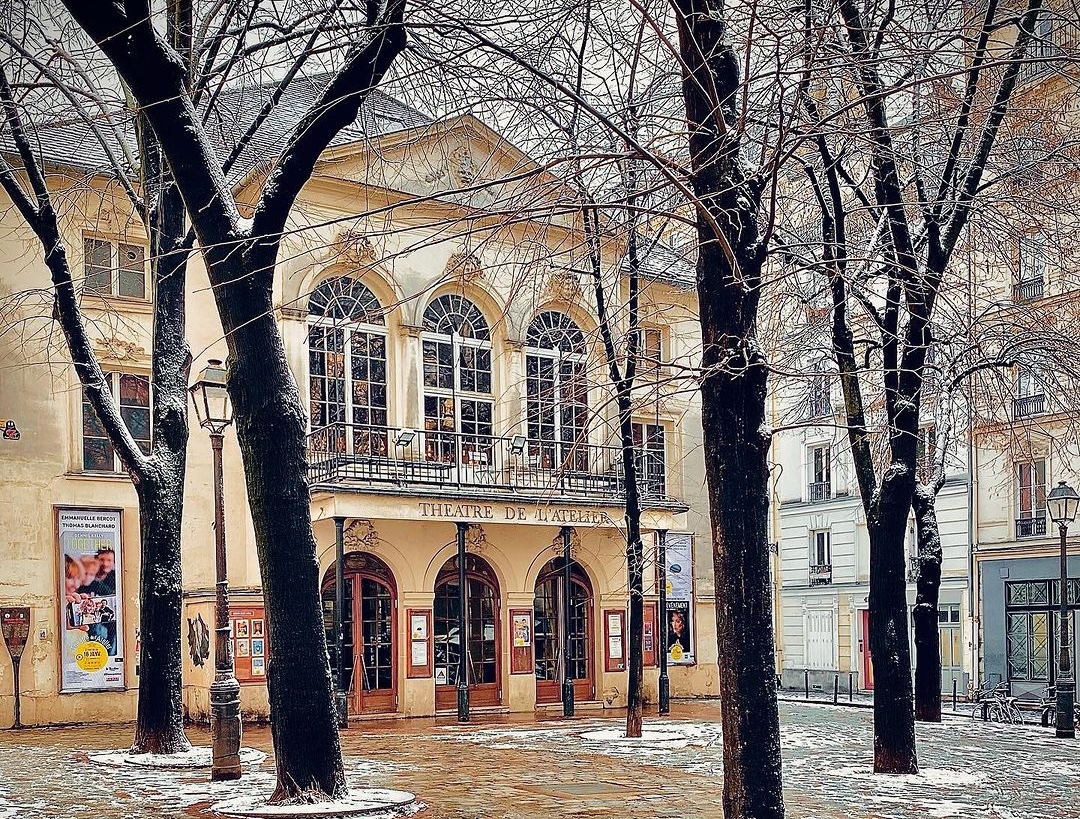
The hundred-year old Théâtre de l’Atelier features thought-provoking theater (traditional and contemporary), one-person shows, readings, modern dance, and music. (Helpful hint: In Paris it’s a good idea to tip the ushers to get upgraded to a better seat.) After the show, head to the Café du Théâtre across the street to discuss the show as you eat, drink, and people-watch.
9. Shop for clothes and jewelry made in France
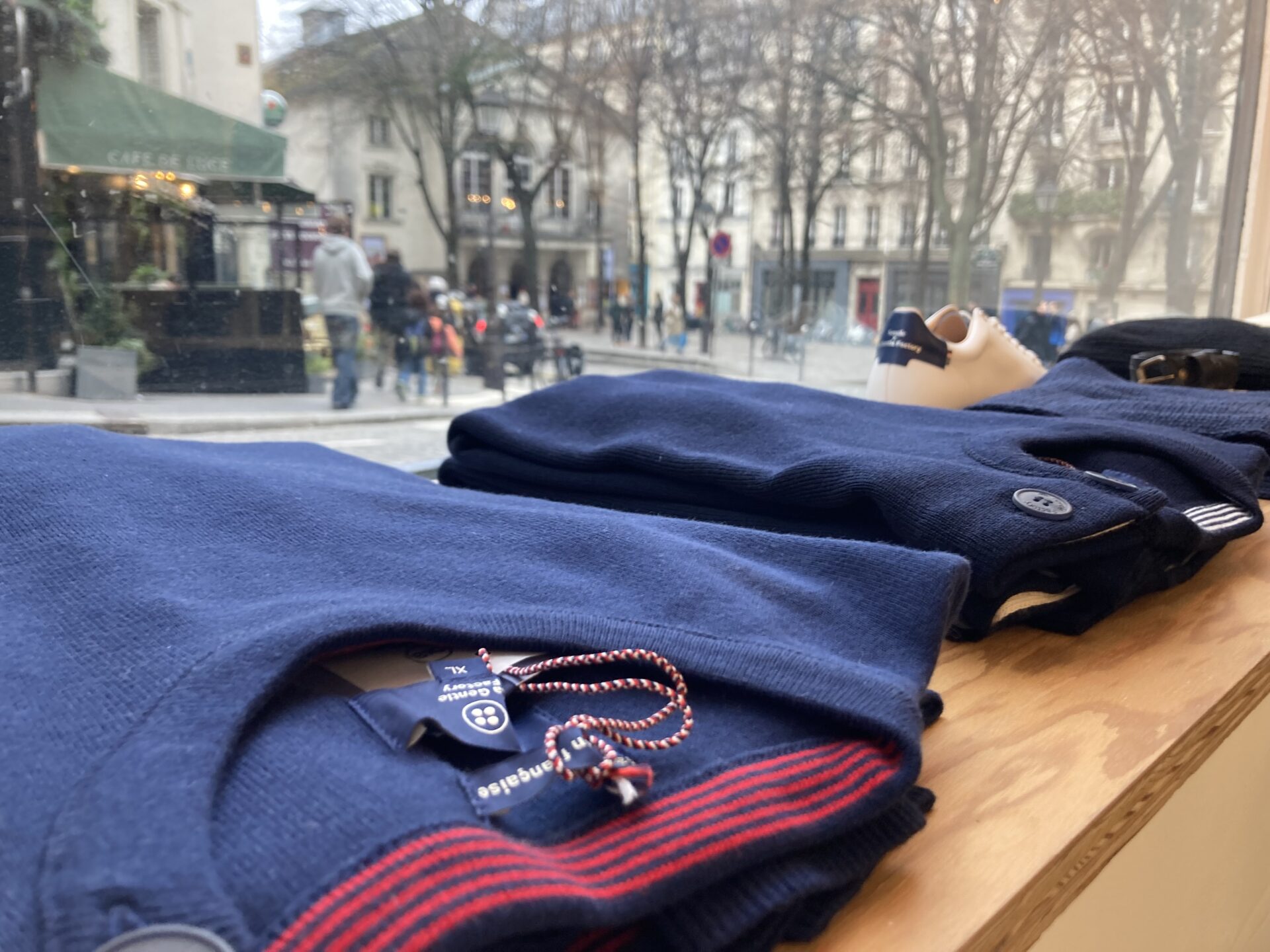
Right off the Place Charles Dullin, a section of Montmartre frequented by Parisians and not overrun by cheap souvenir stands, there are some terrific boutiques worth browsing. At La Gentle Factory you’ll find elegant casual clothes in natural fabrics made in France by a mindful company. Just up the street, stop in at Jérémie Barthod if you’re interested in lovely and affordable modern jewelry. This is the place to go to find some lovely and unique gifts made in France to bring home.
10. Take in some culture at the Musée de Montmartre
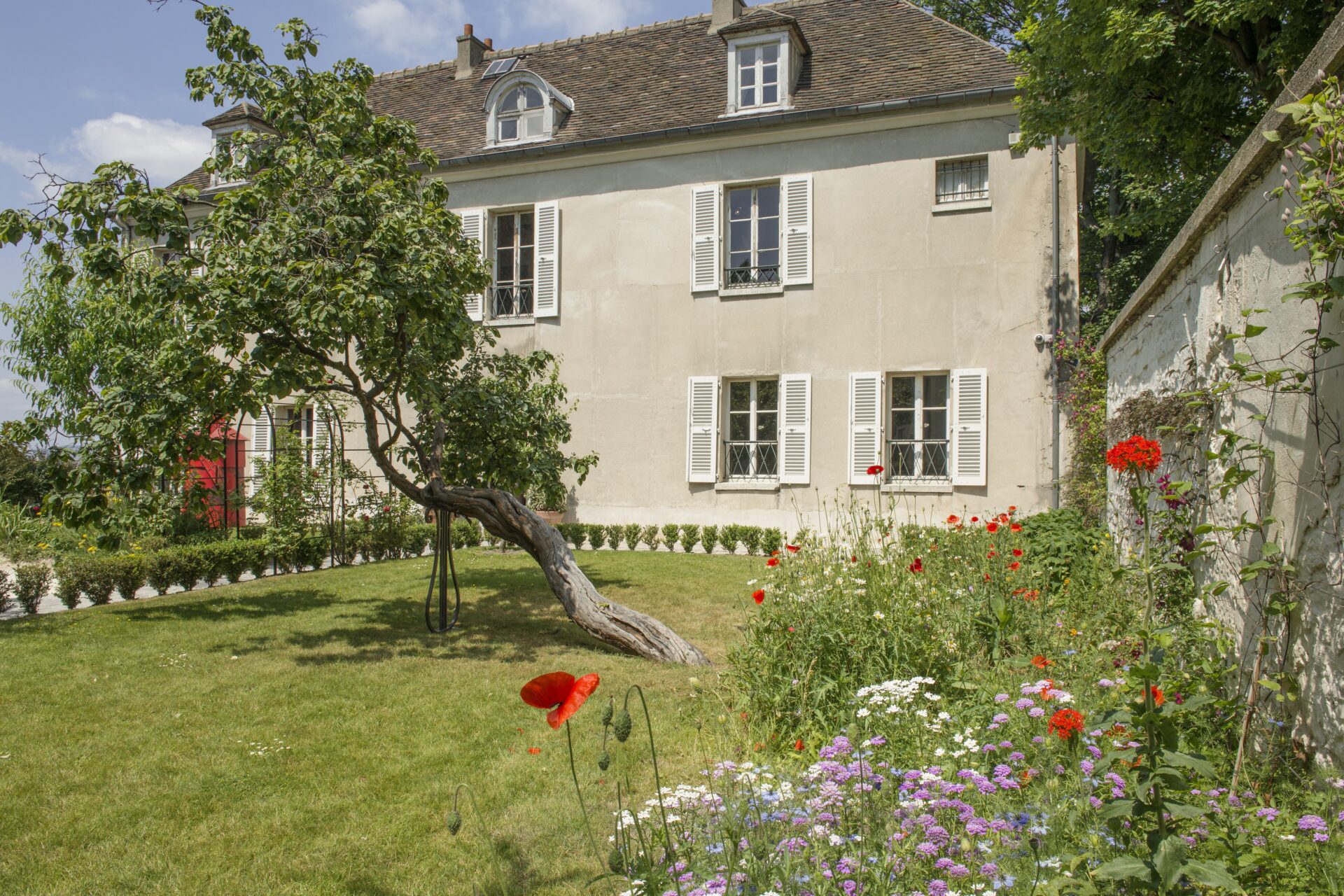
Take in some culture at the Musée de Montmartre (Montmartre Museum), housed in La Maison du Bel Air, which was once home to August Renoir. The museum features art by famous and lesser-known Montmartre artists alike, including photographs, paintings, portraits, and posters that capture the essence of old Montmartre. I particularly appreciate the vintage posters for dance halls and local attractions, as markers evoking the spirit of a time gone by. Spring and summer are the best seasons to visit Montmartre and stroll the museum property’s Renoir Gardens, and have a coffee and pastry at their glass-enclosed Renoir Café.
11. Visit the Clos Montmartre, the last working vineyard in Paris

The Vigne du Clos Montmartre, one of the neighborhood’s hidden gems, sits on the hill under the Musée de Montmartre. For a tour followed by a tasting, a reservation is a must, as space is limited. If you’re lucky enough to be in Paris in October, don’t miss the annual Fête des Vendanges de Montmartre(Montmartre wine harvest festival). Now in its ninetieth year, this is a full-blown regalia with food, wine, music, markets, dance, art, and a parade. Except for the wine, most of the activities are extremely family friendly.
12. Follow in the footsteps of Amélie Poulain

Do some film set-jetting by starting your day with coffee and croissants at Le Café des Deux Moulins (the café of the two windmills), where Amélie worked in the famous French film that bears her name. The movie, which captured a nostalgic dream-like Montmartre, was an industry game-changer, made Audrey Tatou an international star, and re-introduced Montmartre to a new generation. For more set-jetting inspiration, Ciné-Balade is a tour operator that offers terrific tours based on movies made in Montmartre.
13. Browse for books and view some art at Halle Saint-Pierre
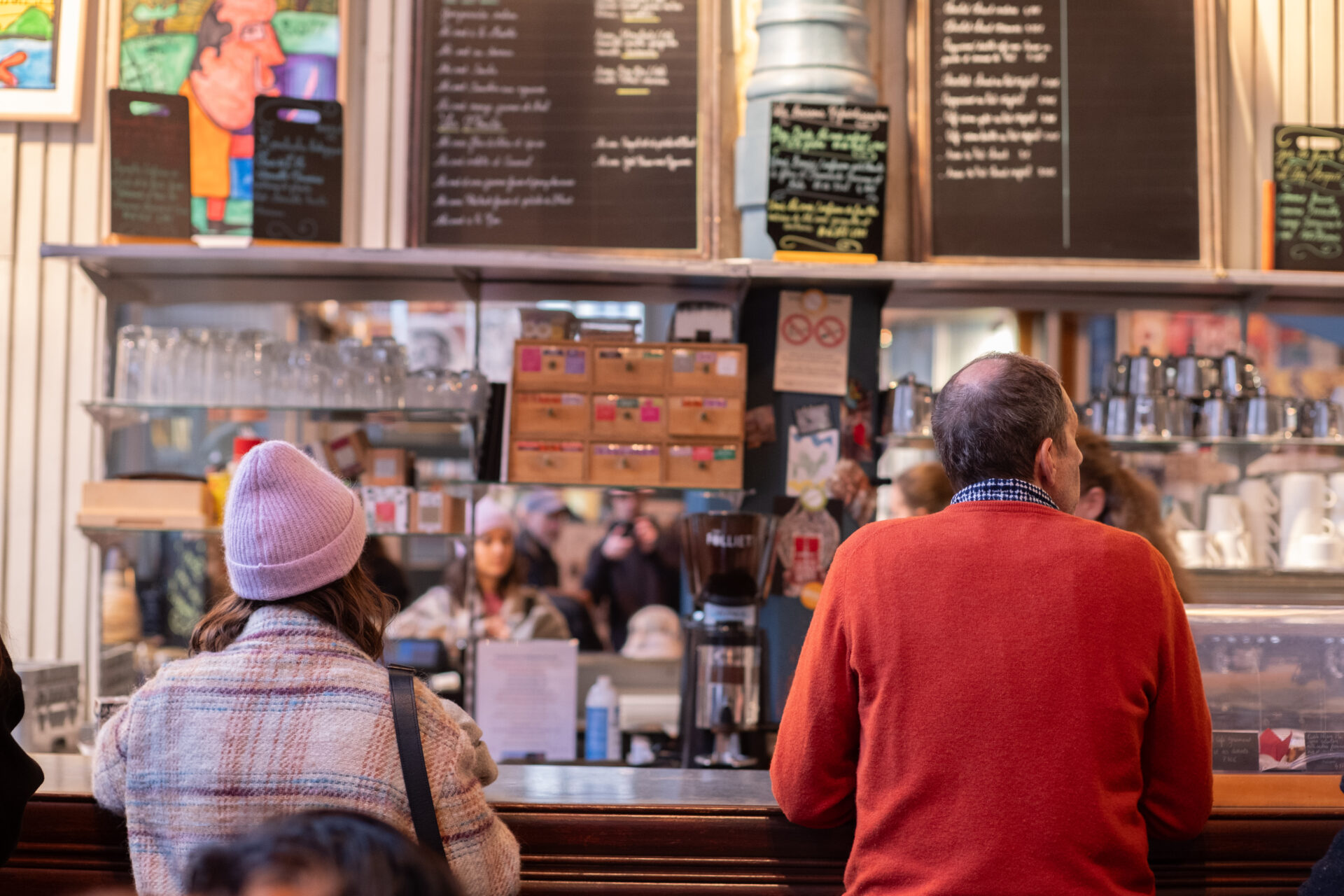
Photo: Octave Lehmann
Halle Saint-Pierre is a funky multi-use space that serves as a bookstore-café-bar-art gallery at the foot of Montmartre, where a lot of neighborhood locals and avant-garde Paris art crowds gather. Just two blocks from the Funiculaire, this is a great place to sit at a table and plan out your day of trekking through Montmartre over a hot chocolate (or something stronger).
14. Hunt for fabulous fabrics at the Marché Saint-Pierre
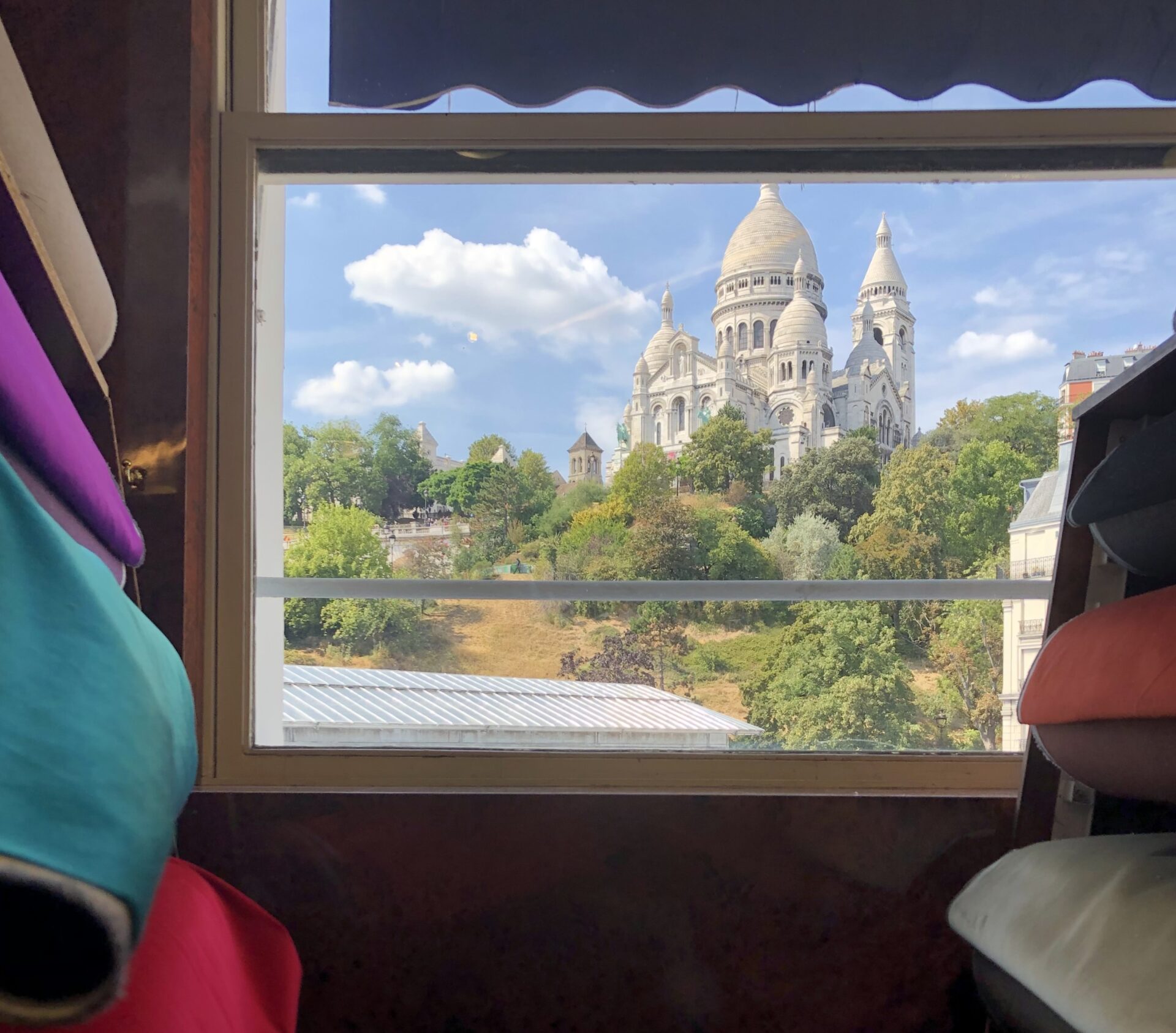
This seven-story building the length of an entire block has the largest collection of fabric stores in Paris, and has been a French fashion industry and home decorator resource for over a hundred years. Wandering among the thousands of colorful bolts is a dizzying delight. There are fabrics to fit every possible budget and taste. (Photo tip: Some of the best views of Sacré-Coeur can be found on the upper floors here.)
15. Stroll the old-fashioned streets and back alleys of Montmartre
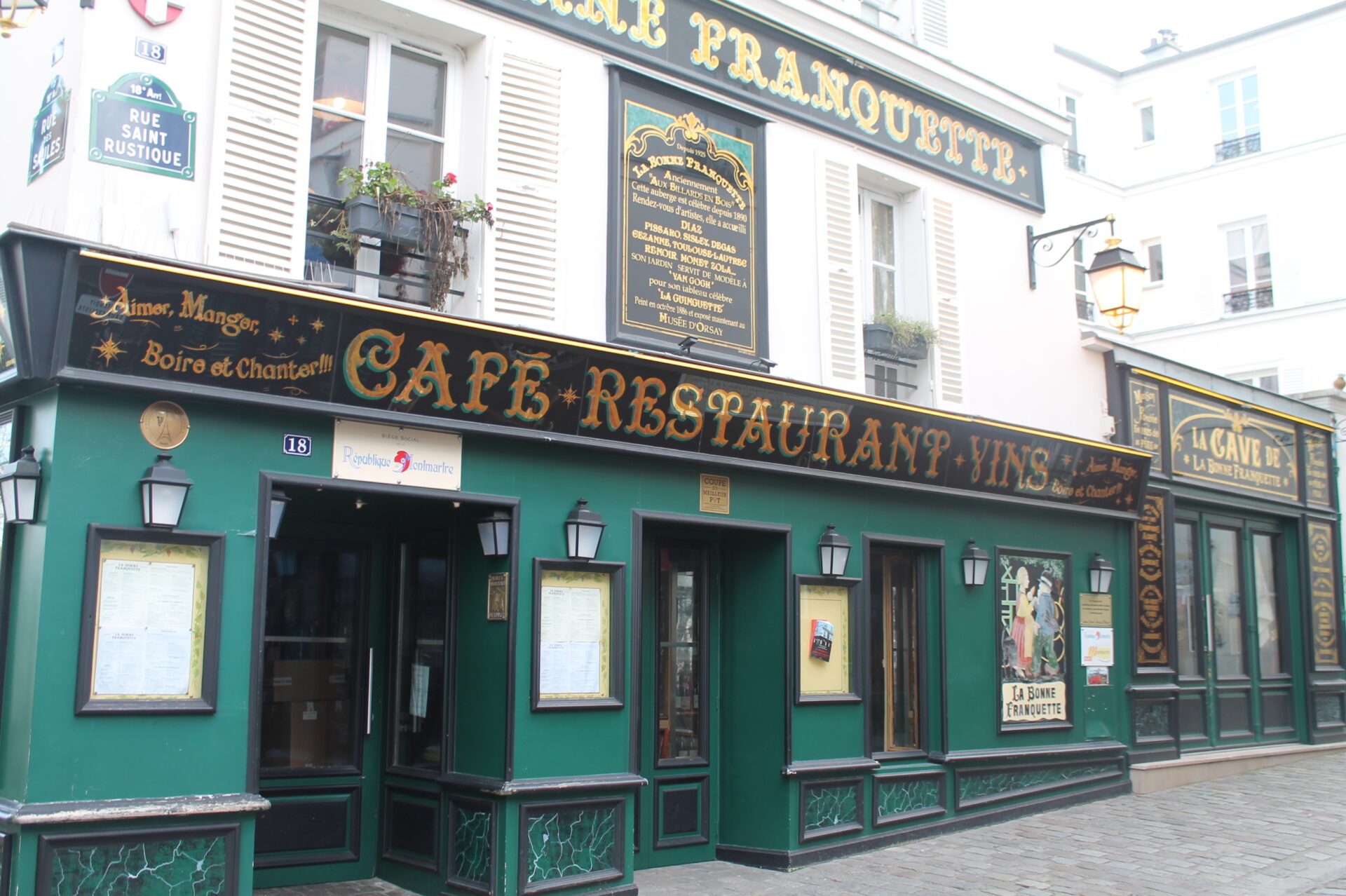
On a sunny day you would be hard-pressed to find better shots that capture the timeless side of Paris than right here. Be sure to check out rue de l’Abreuvoir (home to the Instagram sensation La Maison Rose) and rue Saint-Rustique. On Villa Léandre, the dead-end street of Anglo-Norman style town-houses, you’ll feel like you’ve stepped outside of Paris, and into what could be a 1900s English country village.
16. Discover the super hip 18th arrondissement
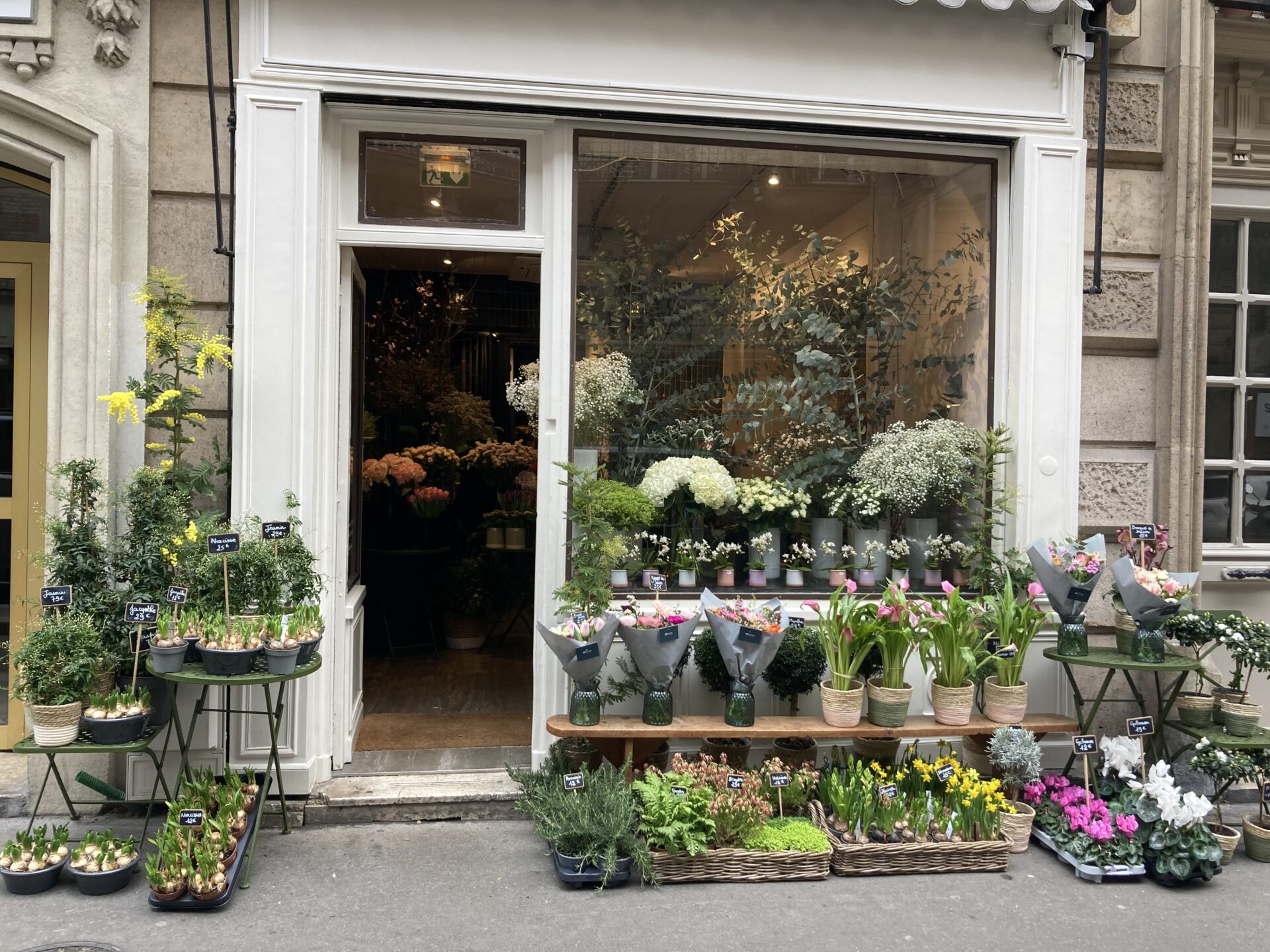
At the bottom of the Butte (hill) Montmartre, this part of the 18th arrondissement feels much more residential (read, less touristy) than upper Montmartre. With its low-key boutiques and bistros, it has a decidedly “Brooklyn” vibe, and draws a somewhat younger and hipper crowd. Check out the ready-to-wear fashion in contemporary African-inspired fabrics at Maison Château Rouge, Youssouf Fofana’s concept store. One of my favorite lunch spots to meet friends in the area is Mademoiselle Raymonde, an unpretentious and naturally charming bistro where you can get traditional French cuisine like home-style roast chicken, Merguez (lamb sausage), and hearty olive oil smashed potatoes.
17. Eat your way down one of the foodiest streets in Paris
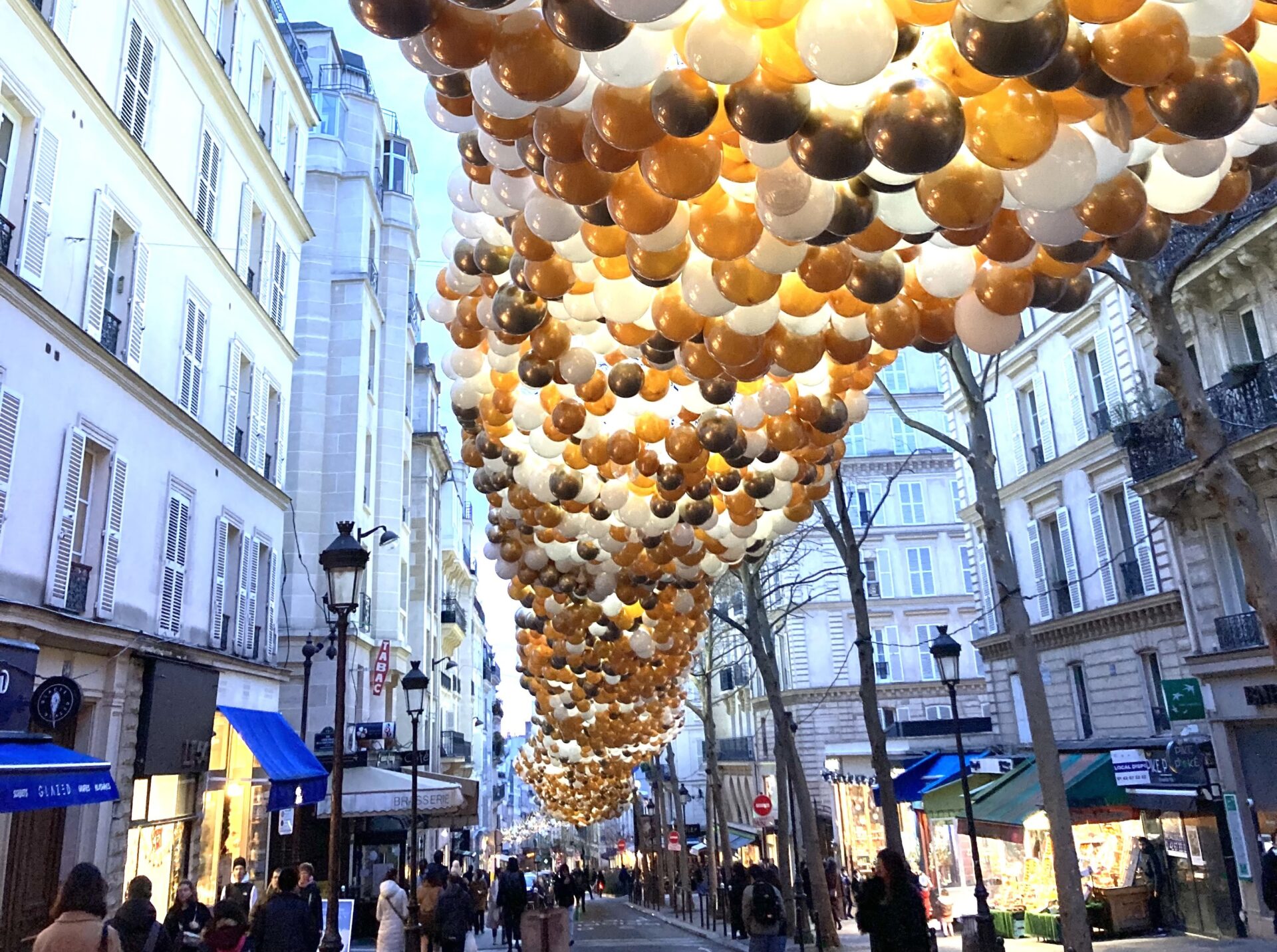
One of the most underrated but exciting things to do in Montmartre is to walk down rue des Martyrs, one of the original ancient roads that led up to the Montmartre neighborhood. Paris-based journalist Elaine Sciolino wrote a fantastic book about it called The Only Street in Paris. You’ll find countless bakeries, bistros, cafés, markets, greengrocers, and traiteurs (prepared foods delis). Two of my favorite food finds in Paris, Rose Bakery and Chez Vous bistro, are on this street.
18. Stroll through Montmartre Cemetery
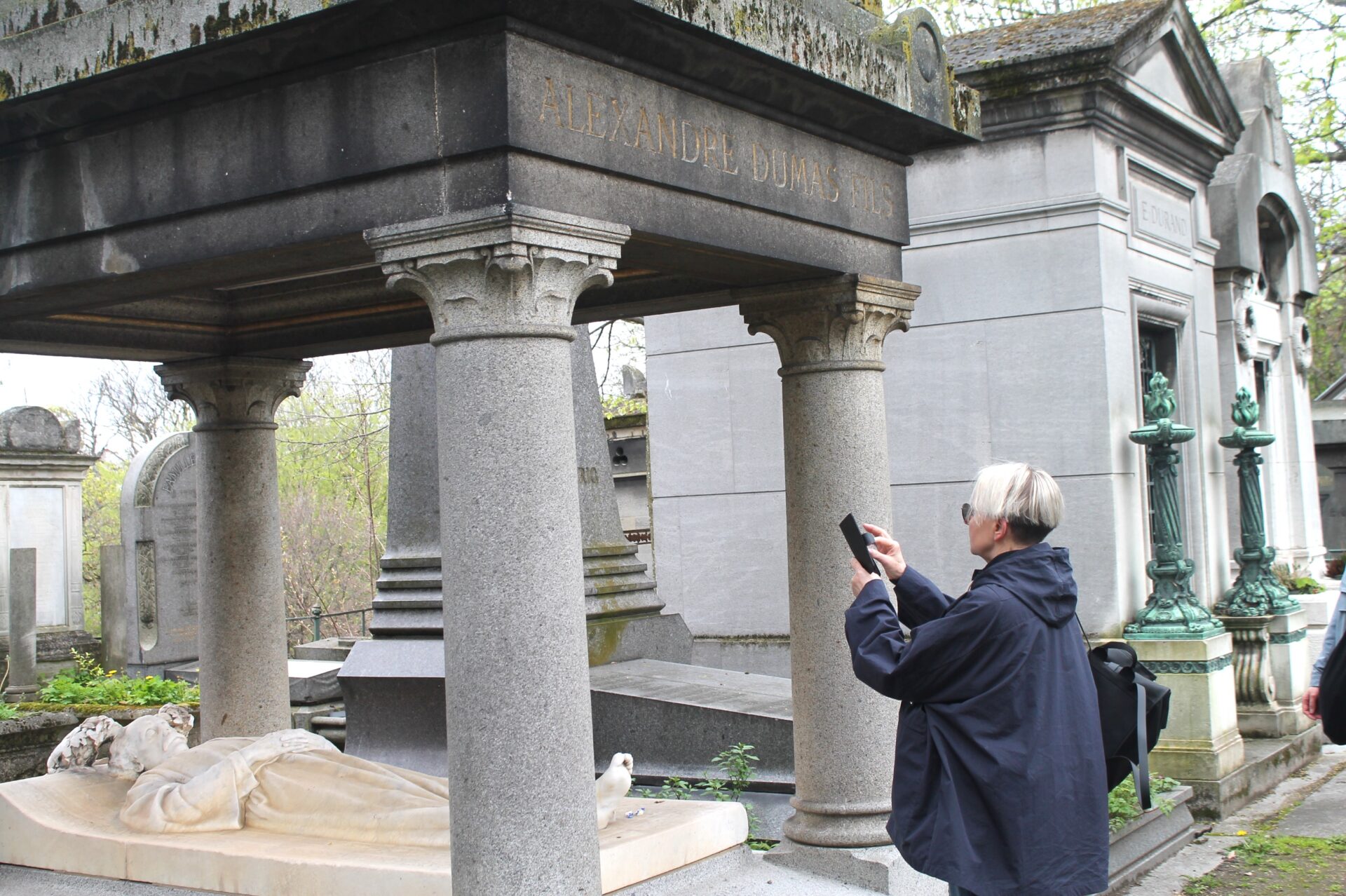
The 110 acres of Montmartre Cemetery are filled with famous historical figures from the arts and sciences, stunning tombs, sculptures, and tons of street cats. You can pay homage to the likes of French New Wave film pioneer François Truffaut, pop diva Dalida, Count of Monte Cristo author Alexandre Dumas, Impressionist painter Edgar Degas, Ballet phenom Nijinsky, and Émile Zola, among many others. If you’re into jazz, Adolph Sax (inventor of the Saxophone) is buried here as well. A visit to the serene Montmartre Cemetery is particularly nice after a busy day of enjoying the many pleasures of Montmartre hill.
19. Feel the love at the Mur des Je t’aime
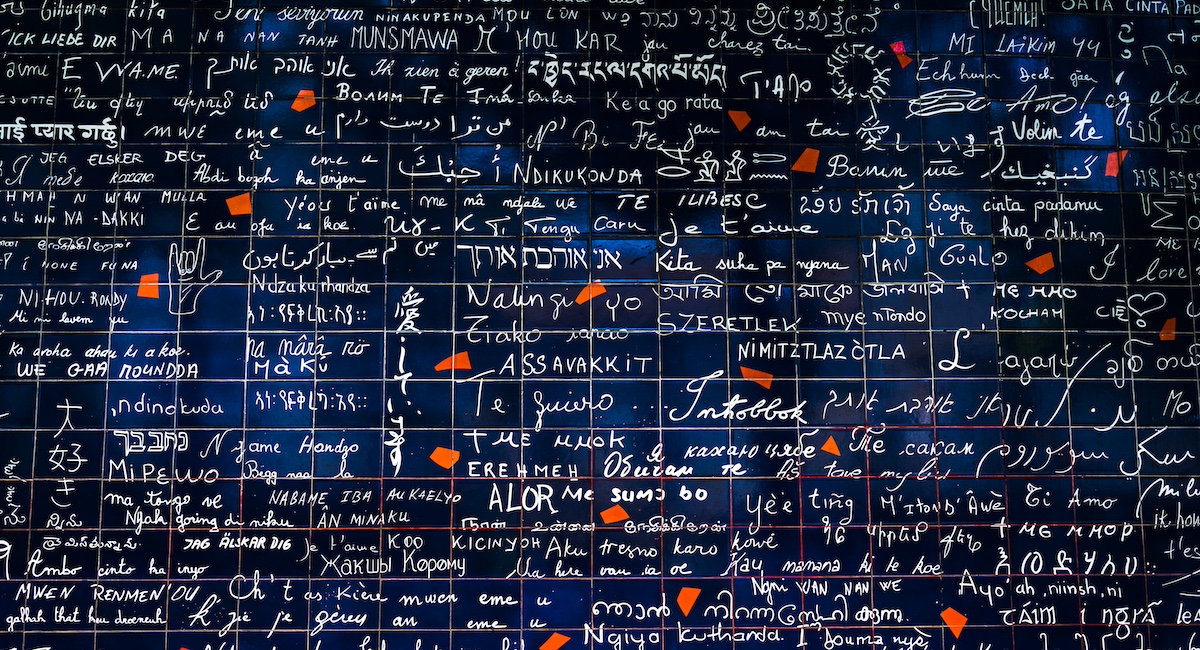
When you emerge from the Art Nouveau metro station at Abbesses, straight ahead of you in the Square Jehan Rictus garden you can’t miss the Mur des Je t’aime (I Love You Wall). The 430 square foot artwork is made up of 612 lava tiles with “I love you” written in 1500 languages. The artist Frédéric Baron transformed a wall, a symbol of an object that typically separates people, into art that brings people together with a message of a universal emotion that does the same.
20. Chase (red) windmills, gaze up at the famous Moulin Rouge
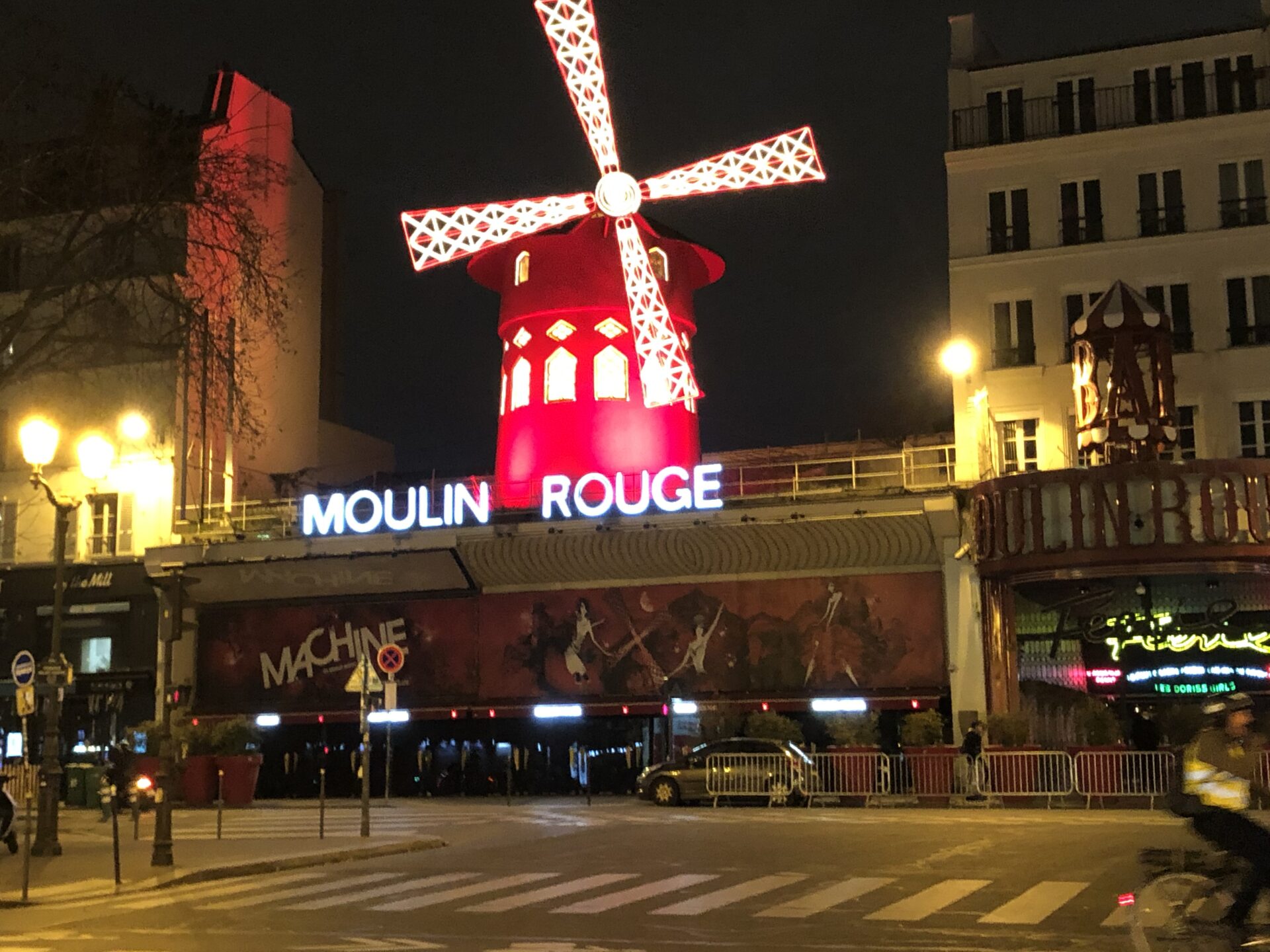
Located just in front of the Blanche metro station (# 2 line) at the base of the hill, consider beginning or capping your trip to Montmartre with a stop at the famous Moulin Rouge. While I can’t vouch for the pricey cabaret show, it’s worth making a pit stop in front of the landmark red windmill for a photo op of the past in the present. Created at the height of the Belle Époque in 1889 (the same year as the Eiffel Tower), Le Moulin Rouge has been immortalized on stage, in film, and of course by Henri de Toulouse-Lautrec’s posters, holding onto a reputation as one of the epicenters of cabaret entertainment.
Where to eat in Montmartre
Eat/drink at an authentic French bistro. Le Moulin de la Galette, at 83 rue Lepic, has a glass ceiling over the bar through which you can see the antique wooden windmill that the restaurant is built under. Au Virage Lepic, at 61 rue Lepic, has been serving hearty traditional French food and wine to locals, travelers, and celebrities for over a century.
Rebekah Peppler, Paris-based writer and author, tells me that Au Rêve is her “go-to when meeting friends for apéro in the neighborhood” and that “they have a great selection of natural wine and the space is cozy and beautiful.” Au Rêve, 89 Rue Caulaincourt, 75018 Paris
She also recommends having a cup of coffee at the immeasurably cool Clove Coffee Shop, just off the steps of Sacré-Cœur. Rebekah added that “weekend days tend to draw a crowd but the expertly prepared coffee (and tea and hot chocolate) and people watching are worth the wait.” Clove Coffee Shop, 14 Rue Chappe, 75018 Paris
You can’t go wrong at Le Maquis In the 18th arrondissement. The young chefs, who got their culinary chops in Michelin-starred restaurants, offer a superb seven-course dinner for 65€. Le Maquis, 53 Rue Des Cloÿs 75018 Paris
Fromagerie Racines is an excellent cheese shop with a well-curated selection, and their épicerie around the corner is great too. Fromagerie Racine, 2, rue Ferdinand Flocon, Paris 75018
Where to stay in Montmartre
Terrass Hotel is true to its name and, in addition to its inviting lobby and rooms, this Montmartre hotel has a rooftop perfect for dining or drinks when the weather permits. Terrass Hotel, 12-14 Rue Joseph de Maistre, 75018 Paris
Hôtel Littéraire Marcel Aymé, with a literary themed décor as the name suggests. Hôtel Litteéraire Marcel Aymé, 16 rue Tholozé 75018 Paris
Philip Ruskin is an External Lecturer (ESSEC Bus. School), Consultant (food & travel marketing), writer, drummer and regular contributor to Frenchly. He loves to bike around his adopted hometown of Paris. Find him here, on Instagram. All photos by the author, except where indicated.

